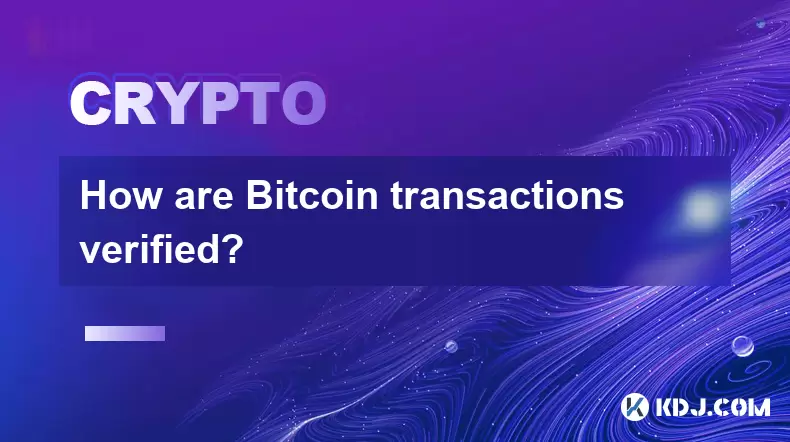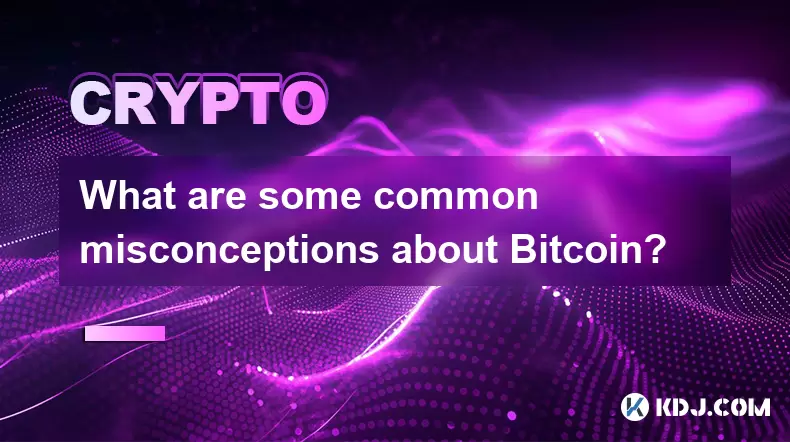-
 Bitcoin
Bitcoin $116700
0.24% -
 Ethereum
Ethereum $3973
4.34% -
 XRP
XRP $3.283
7.68% -
 Tether USDt
Tether USDt $1.000
0.01% -
 BNB
BNB $789.8
2.27% -
 Solana
Solana $176.2
3.31% -
 USDC
USDC $0.9999
0.00% -
 Dogecoin
Dogecoin $0.2238
5.14% -
 TRON
TRON $0.3389
-0.51% -
 Cardano
Cardano $0.7907
4.03% -
 Stellar
Stellar $0.4527
10.02% -
 Hyperliquid
Hyperliquid $41.07
4.27% -
 Sui
Sui $3.794
1.77% -
 Chainlink
Chainlink $19.49
10.40% -
 Bitcoin Cash
Bitcoin Cash $580.9
0.74% -
 Hedera
Hedera $0.2617
4.32% -
 Avalanche
Avalanche $23.41
3.67% -
 Ethena USDe
Ethena USDe $1.001
-0.03% -
 Litecoin
Litecoin $122.4
1.38% -
 Toncoin
Toncoin $3.364
1.49% -
 UNUS SED LEO
UNUS SED LEO $8.988
0.37% -
 Shiba Inu
Shiba Inu $0.00001295
2.82% -
 Uniswap
Uniswap $10.62
5.75% -
 Polkadot
Polkadot $3.922
4.46% -
 Dai
Dai $1.000
0.01% -
 Bitget Token
Bitget Token $4.494
2.15% -
 Monero
Monero $268.0
-1.30% -
 Cronos
Cronos $0.1523
3.68% -
 Pepe
Pepe $0.00001127
4.43% -
 Aave
Aave $285.4
4.85%
What is the maximum number of Bitcoins that will ever exist?
Bitcoin's 21 million supply cap ensures scarcity, with halvings every 4 years reducing new coin creation until the final Bitcoin is mined around 2140.
Aug 08, 2025 at 07:43 pm

Understanding Bitcoin's Fixed Supply Cap
The maximum number of Bitcoins that will ever exist is 21 million. This number is hardcoded into the Bitcoin protocol and serves as a foundational principle of the cryptocurrency’s design. Unlike traditional fiat currencies, which central banks can print in unlimited quantities, Bitcoin operates under a strict monetary policy. The 21 million cap ensures scarcity, mimicking the properties of precious metals like gold. This scarcity is one of the key reasons Bitcoin is often referred to as "digital gold."
The concept of a finite supply was introduced by Bitcoin’s pseudonymous creator, Satoshi Nakamoto, in the original Bitcoin whitepaper. The code enforces this limit through a mechanism known as the block reward halving, which gradually reduces the rate at which new Bitcoins are created. This process ensures that the total supply approaches 21 million asymptotically, never exceeding it.
How Bitcoin Mining and Block Rewards Work
New Bitcoins are introduced into circulation through a process called mining. Miners use powerful computers to solve complex cryptographic puzzles, validating transactions and securing the network. In return, they are rewarded with newly minted Bitcoins. This reward is known as the block reward.
Initially, the block reward was set at 50 BTC per block. However, the Bitcoin protocol includes a built-in mechanism that cuts this reward in half approximately every four years—or more precisely, every 210,000 blocks. This event is known as the halving. The halving ensures that the rate of new Bitcoin creation slows over time, preventing inflation and preserving value.
- Miners receive block rewards for adding new blocks to the blockchain
- The block reward started at 50 BTC and halves every 210,000 blocks
- The reward is reduced to ensure the total supply does not exceed 21 million
- Transaction fees become increasingly important as block rewards diminish
Bitcoin Halving Events and Supply Progression
The halving process is critical to understanding how Bitcoin approaches its 21 million limit. Each halving reduces the number of new Bitcoins generated per block, slowing the inflation rate. The first halving occurred in 2012, reducing the reward from 50 BTC to 25 BTC. Subsequent halvings took place in 2016 (12.5 BTC), 2020 (6.25 BTC), and the next is expected around 2024, reducing the reward to 3.125 BTC.
These events are predictable and transparent because they are based on block height, not time. As of now, over 19 million Bitcoins have already been mined, meaning less than 2 million remain to be released. The diminishing block rewards mean that the final Bitcoins will not be mined until around the year 2140, due to the exponential slowdown in issuance.
- The 2012 halving reduced the reward to 25 BTC
- The 2016 halving brought it down to 12.5 BTC
- The 2020 halving cut it to 6.25 BTC
- The 2024 halving will reduce it to 3.125 BTC
Why 21 Million? The Design Rationale
The choice of 21 million as the maximum supply was not arbitrary. It was the result of mathematical and economic considerations embedded in Bitcoin’s code. The halving schedule, combined with the initial block reward, naturally leads to a total issuance that converges on this number. The formula used to calculate the total supply is a geometric series:
Total Supply = Initial Reward × (1 + 1/2 + 1/4 + 1/8 + ...)
This infinite series converges to double the initial issuance per cycle, resulting in approximately 21 million when applied across all halving cycles. While Satoshi never explicitly explained the exact reasoning, the number balances scarcity with divisibility. Bitcoin can be divided into smaller units—down to one hundred millionth of a Bitcoin, known as a satoshi—allowing for microtransactions even with a limited supply.
Lost Bitcoins and Effective Circulating Supply
Although the maximum supply is capped at 21 million, the actual number of Bitcoins in active circulation is slightly lower. A significant number of early-mined Bitcoins are believed to be permanently lost due to forgotten private keys, damaged hardware, or discarded storage devices. Some estimates suggest that between 2 to 4 million BTC may be unrecoverable.
This means the effective circulating supply is less than the theoretical maximum. However, the protocol still treats the 21 million cap as absolute—no new Bitcoins will be created to replace lost ones. This further enhances scarcity, as the loss of coins effectively reduces availability without altering the issuance rules.
- Lost coins cannot be recovered without private keys
- The 21 million cap remains unchanged regardless of losses
- Reduced availability may increase demand over time
- Lost coins are treated as permanently removed from circulation
Common Misconceptions About Bitcoin’s Supply
Some people believe that Bitcoin’s supply could be changed through a hard fork or community consensus. While it is technically possible to alter the code, doing so would require near-universal agreement among miners, developers, and users. Any attempt to increase the supply would likely result in a new, separate cryptocurrency, while the original Bitcoin with the 21 million cap would continue to exist.
Another misconception is that miners will stop securing the network once all Bitcoins are mined. However, miners will still earn income from transaction fees, which users pay to prioritize their transactions. As block rewards diminish, these fees are expected to become the primary incentive for miners.
Frequently Asked Questions
Can the 21 million Bitcoin limit ever be changed?
No, the 21 million cap is embedded in Bitcoin’s consensus rules. Altering it would require a fundamental change to the protocol, which would likely result in a split rather than a modification of the original chain.
How many Bitcoins are left to be mined?
As of now, approximately 1.8 million Bitcoins remain to be mined. The exact number decreases slightly with each new block added to the blockchain.
What happens when all 21 million Bitcoins are mined?
Once the last Bitcoin is mined, miners will no longer receive block rewards. Instead, they will rely solely on transaction fees to compensate for their work in validating and securing the network.
Are all Bitcoins accounted for?
Not all Bitcoins are actively used. A significant portion, possibly millions, are considered lost due to inaccessible wallets or forgotten keys. These coins remain on the blockchain but are effectively out of circulation.
Disclaimer:info@kdj.com
The information provided is not trading advice. kdj.com does not assume any responsibility for any investments made based on the information provided in this article. Cryptocurrencies are highly volatile and it is highly recommended that you invest with caution after thorough research!
If you believe that the content used on this website infringes your copyright, please contact us immediately (info@kdj.com) and we will delete it promptly.
- Bitcoin, Litecoin, and Avalanche: Decoding the Crypto Buzz in the Big Apple
- 2025-08-09 00:30:12
- Pengu Takes Flight: Can This Solana Meme Coin Conquer the Top 3?
- 2025-08-09 00:50:13
- Coinbase's Big Bet: DEX Trading and the Everything App Vision
- 2025-08-09 01:30:12
- Ethereum and Shiba Inu: Navigating the Bull Move
- 2025-08-09 00:35:12
- Dogecoin, AI Coins, and CMC Listings: What's Hot and What's Not
- 2025-08-09 01:35:51
- Navigating the Crypto Market in 2025: Smart Decisions for Meme Coin Investing
- 2025-08-09 00:55:55
Related knowledge

Can the Bitcoin protocol be changed?
Aug 07,2025 at 01:16pm
Understanding the Bitcoin ProtocolThe Bitcoin protocol is the foundational set of rules that govern how the Bitcoin network operates. It defines every...

How are Bitcoin transactions verified?
Aug 08,2025 at 06:57am
Understanding Bitcoin Transaction VerificationBitcoin transactions are verified through a decentralized network of nodes and miners that ensure the le...

How does decentralization make Bitcoin secure?
Aug 08,2025 at 09:35am
Understanding Decentralization in BitcoinDecentralization is a foundational principle of Bitcoin's architecture and plays a critical role in its secur...

What are some common misconceptions about Bitcoin?
Aug 07,2025 at 07:22pm
Bitcoin is Just Like Regular MoneyA widespread misconception is that Bitcoin functions identically to traditional fiat currencies like the US dollar o...

What is the role of nodes in the Bitcoin network?
Aug 08,2025 at 04:14pm
Understanding the Function of Nodes in the Bitcoin NetworkNodes are fundamental components of the Bitcoin network, serving as the backbone that ensure...

Is Bitcoin a solution for inflation?
Aug 08,2025 at 04:57am
Understanding Inflation and Its Impact on Traditional CurrenciesInflation refers to the sustained increase in the price of goods and services over tim...

Can the Bitcoin protocol be changed?
Aug 07,2025 at 01:16pm
Understanding the Bitcoin ProtocolThe Bitcoin protocol is the foundational set of rules that govern how the Bitcoin network operates. It defines every...

How are Bitcoin transactions verified?
Aug 08,2025 at 06:57am
Understanding Bitcoin Transaction VerificationBitcoin transactions are verified through a decentralized network of nodes and miners that ensure the le...

How does decentralization make Bitcoin secure?
Aug 08,2025 at 09:35am
Understanding Decentralization in BitcoinDecentralization is a foundational principle of Bitcoin's architecture and plays a critical role in its secur...

What are some common misconceptions about Bitcoin?
Aug 07,2025 at 07:22pm
Bitcoin is Just Like Regular MoneyA widespread misconception is that Bitcoin functions identically to traditional fiat currencies like the US dollar o...

What is the role of nodes in the Bitcoin network?
Aug 08,2025 at 04:14pm
Understanding the Function of Nodes in the Bitcoin NetworkNodes are fundamental components of the Bitcoin network, serving as the backbone that ensure...

Is Bitcoin a solution for inflation?
Aug 08,2025 at 04:57am
Understanding Inflation and Its Impact on Traditional CurrenciesInflation refers to the sustained increase in the price of goods and services over tim...
See all articles

























































































